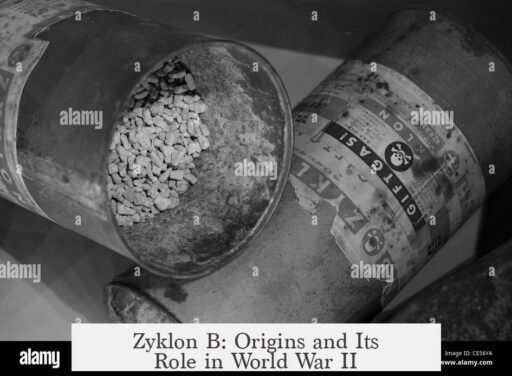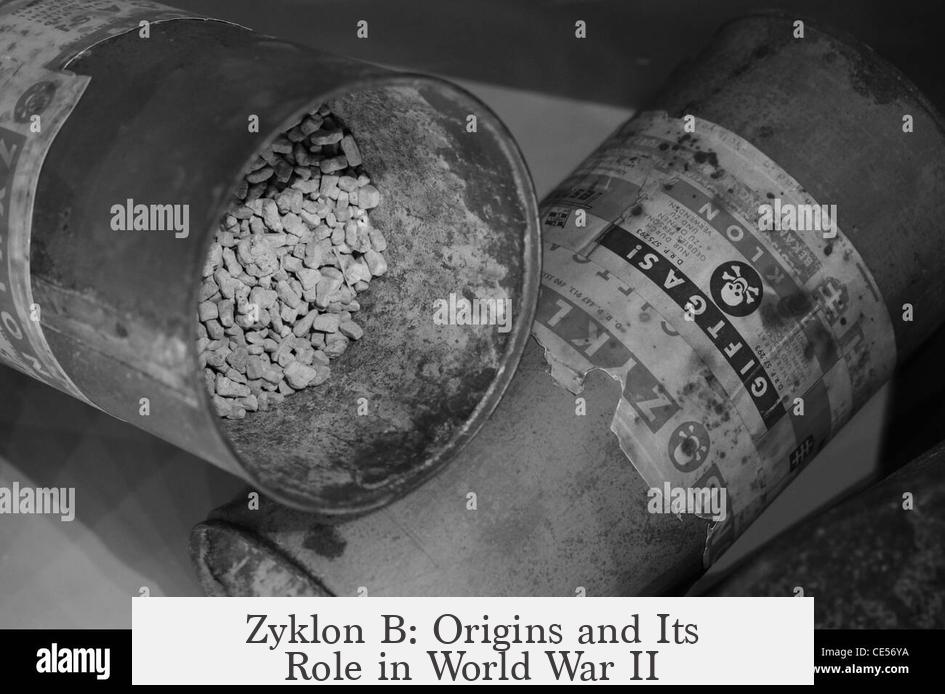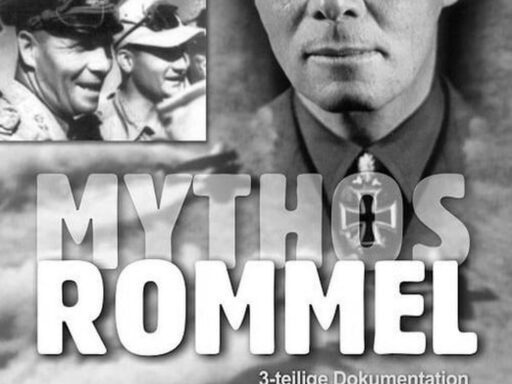Zyklon-B is a cyanide-based chemical once used as a pesticide that became infamous during World War II as a method of mass execution within Nazi extermination camps. It consists of hydrogen cyanide (HCN) contained in metal canisters with an absorbent and an irritant. HCN turns from liquid to gas near room temperature, allowing rapid release when the canister is opened and heated.
Initially, Zyklon-B was developed for agricultural fumigation. HCN had been an industrial pesticide since the late 19th century, used to kill pests in crops and stored goods. Both Zyklon-B and its predecessor Zyklon-A were cyanide-based products designed for this purpose. Its lethal properties to insects and rodents lent themselves tragically to misuse for human extermination under Nazi rule.
The shift from pesticide to execution agent occurred during WWII. The Nazis began a euthanasia program called Aktion T4, targeting the mentally and physically disabled for systematic killing. Early killings employed lethal injections, but after invading Poland in 1939, mobile and stationary gas chambers emerged. Poison gases initially used included carbon monoxide from gas vans or bottled sources. These developments reflected a desire by Nazi leaders to find killing methods that reduced psychological burden on perpetrators compared to shootings.
By September 1941, experimentation with Zyklon-B started at Auschwitz under deputy commandant Karl Fritzsch. Zyklon-B’s use enabled mass killings initially targeting around 900 prisoners—mostly Soviet POWs and sick Poles. The process was refined by moving executions to crematoria to streamline body disposal. Unlike other camps that relied on carbon monoxide gas, Auschwitz-Birkenau and Majdanek were the primary camps where Zyklon-B was used.
- Zyklon-B was released in sealed chambers after victims were locked inside.
- The chemical gas rapidly caused death by interfering with cellular respiration.
- This method was used to murder over a million people at Auschwitz-Birkenau alone.
Other extermination camps such as Belzec, Sobibor, and Treblinka employed carbon monoxide gas delivered via engine exhaust into gas chambers. Chelmno used mobile gas vans for killings. Collectively, these methods formed part of the Nazis’ genocidal machinery but Zyklon-B became uniquely associated with Auschwitz and Majdanek.
In summary, Zyklon-B’s transition from pesticide to execution tool occurred due to Nazi experimentation during the Holocaust’s early years. Its rapid, deadly gas properties made it ideal for mass murder in fixed gas chambers. Nazi officials prioritized efficiency combined with attempts to minimize executioners’ psychological trauma. The presence of absorption material increased safety in handling before deployment but delivered a swift and brutal death once activated. The chemical’s prior industrial and agricultural applications were warped into instruments of state-sponsored genocide.
- Zyklon-B is hydrogen cyanide gas used originally as a pesticide.
- The Nazis adapted it for mass killing during WWII after experiments in 1941 at Auschwitz.
- Used mainly at Auschwitz-Birkenau and Majdanek in extermination gas chambers.
- Killed over a million people, mostly Jews, in the Holocaust.
- Other camps used carbon monoxide gas or mobile gas vans instead.
- Nazi motivations included reducing psychological harm to executioners and improving killing logistics.



